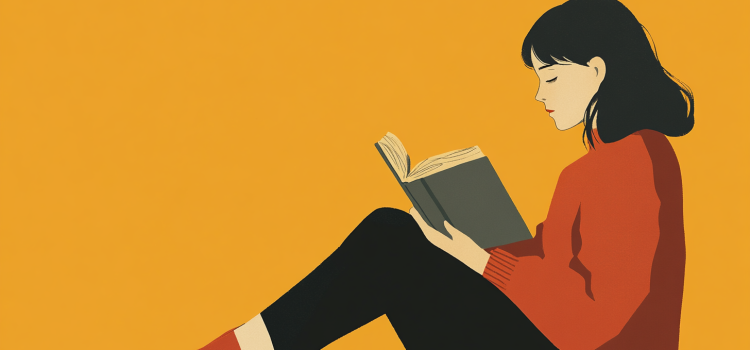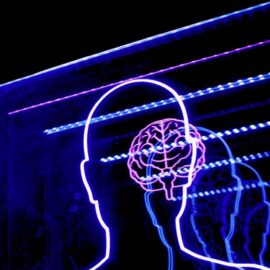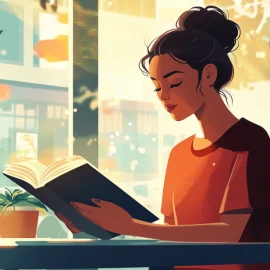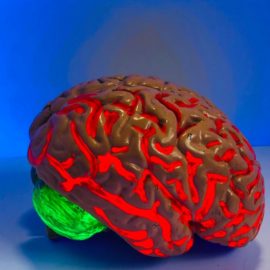
What happens in our brains when we read? How did humans develop the ability to transform marks on a page into meaning and understanding?
Maryanne Wolf’s Proust and the Squid: The Story and Science of the Reading Brain explores the evolution of reading from ancient civilizations to our digital present. Wolf reveals how the brain adapts to this invented skill, reshaping pathways as we learn to connect symbols with sounds and meanings.
Continue reading for an overview of this book that will make you look at a basic skill with new eyes.
Overview of Maryanne Wolf’s Proust and the Squid
What happens in our brains when we read? How did humans develop the ability to transform marks on a page into meaning, emotion, and understanding? These questions animate Maryanne Wolf’s Proust and the Squid: The Story and Science of the Reading Brain. She argues that, today, both reading and readers are changing as technology transforms what and how we read—for better and for worse.
From the ancient past to today, Wolf explains, reading and writing evolved from niche skills reserved for highly trained experts to widespread tools we all learn as children in school. They allow us to engage deeply with texts and ideas, developing our minds. But these abilities are at risk in the digital age, as the fast-paced and distracted experience of online reading changes our brains.
Technology isn’t going anywhere, though. So instead of fighting it, Wolf—a cognitive neuroscientist who studies the reading brain in children and people with dyslexia—says we should adapt to it. She argues that we can learn both how to engage thoroughly with complex texts (traditional reading) and how to effectively process multiple streams of information (online reading). This way, we can benefit from both kinds of reading while mitigating tech’s downsides.
In this overview, we’ll detail Wolf’s argument in three parts:
- Part 1: The Invention of Reading outlines how humans created reading (and writing) and how our brains learned to read.
- Part 2: Children and Reading covers how children’s brains adapt to the tasks of reading and writing, and what dyslexia can teach us about reading.
- Part 3: Reading and the Digital Age details how online forms of reading change our brains and what this means for our future as readers and thinkers.
Part 1: The Invention of Reading
Wolf opens by explaining that humans weren’t born to read—unlike with speech, we have no “reading genes.” Rather, reading and writing are human inventions, and they’re relatively new ones at that. We’ll explain the origins and development of these inventions as well as how the brain changed to make them possible.
How We Invented Reading and Writing
According to Wolf, the first “writing” appeared in Mesopotamia around 8,000 BCE in the form of small clay tokens used for counting and recording goods. This was a major breakthrough: Ancient humans had begun using objects to visually symbolize real things.
The next leap came around 3,200 BCE, when the Sumerians developed cuneiform, an early writing system that used logographs (symbols that represent ideas). These logographs could represent not just tangible objects but also abstractions, like myths or religious principles. Around the same time, the Egyptians innovated their system of hieroglyphs, which mixed logographs with phonograms—symbols that represent consonant sounds.
These early writing systems were complex and difficult to learn. But this changed around 750 BCE, when the ancient Greeks invented their alphabet. Unlike previous systems, it was based on one crucial idea: All words are made of a limited set of individual sounds that could be represented by a small set of symbols. By pairing single sounds with single symbols (like a for “ah” and “b” for “buh”), then arranging those symbols to match the sounds of spoken words, the alphabet made reading and writing much easier. More people became able to read and write, and today, the Western world still uses alphabets descended from this ancient Greek creation.
How the Brain Adapted to Reading and Writing
As people invented writing systems and began to read, the human brain had to continuously adapt. Although it has no dedicated reading center, it does have neuroplasticity—the ability to rewire itself in response to experiences. For instance, when you learn a musical instrument, neuroplasticity makes it possible for you to develop “muscle memory” and get good at making music.
Wolf describes three key steps of neuroplasticity that make reading possible: the brain’s ability to create new circuits by connecting older regions, its capacity to develop specialized areas for recognizing patterns (like letters), and its talent for making these processes automatic through practice. So, when ancient humans learned to read, their brains did something like this:
- Visual processing regions originally meant for recognizing objects, like birds or fruits, were repurposed to also recognize letters.
- New, specialized circuits evolved to connect these visual patterns (letters) to sounds and meanings.
- Existing memory and attention systems adapted to efficiently store and retrieve these learned connections, allowing reading to become automatic.
Different writing systems require slightly different adaptations in the brain. Readers of Chinese, for example, develop stronger visual memory circuits due to the language’s character-based system, which requires memorization of thousands of complex visual symbols. In contrast, readers of Western alphabets develop stronger phonological (sound-processing) areas because alphabets rely on the connection between symbols and sounds. But all reading brains share a common pattern: They create new circuits by connecting and repurposing older brain structures.
And, according to Wolf, the neuroscience of reading reveals that our brains evolved not with fixed functions, but with the ability to change according to what we do. Reading is a remarkable example of this plasticity—we literally changed our brains through cultural invention. This has implications for how we think about the future of reading in the digital age.
Part 2: Children and Reading
Now that we’ve covered the origins and evolution of reading, we’ll explain how children learn to read—how their brains develop to acquire this invented system. This development further supports Wolf’s idea that reading skills aren’t innate. Studying how children learn to read also reveals the diversity of how different brains work. Recognizing this diversity, we can understand how best to support children who struggle to learn reading and writing.
We’ll detail the stages children go through as they learn reading and writing, and we’ll discuss how children with dyslexia face unique reading challenges—but also have unique strengths.
How Neurotypical Children Learn to Read
Today, each child undertakes a years-long journey to literacy. Neurotypical children, or those with the thinking and learning skills that society expects, go through several stages of development, which we’ll explore below.
First comes infancy. Before a child encounters any written material, they hear words spoken aloud and read to them. During these early experiences, children develop essential foundations: understanding that pictures represent real things, learning that marks on a page carry meaning, and building basic vocabulary and language skills that will later support reading.
From ages one to five, children continue to develop key abilities that underpin reading and writing. Immersed in her native language(s), a child will keep learning the speech sounds and vocabulary she needs to hear and speak—imagine a toddler moving from babbling to trying for words, like “mom” or “dad.” Through being read to, she’ll also start to develop an awareness of letters and their names. Ideally, she’ll also learn to follow along with stories.
From ages five through seven, most children start or have already started reading. The emerging young reader will understand that letters represent sounds, and she’ll start to sound out words based on that insight. As she gets better at this, she’ll begin connecting simple words (like “but,” “and,” or “was”) to meanings and memorizing those connections.
At seven to nine years old, neurotypical children become more fluent readers. Continuing to grow and learn, the young reader can recognize more and more words automatically, which increases how fast she can read. She also comprehends more of what she reads, understanding not just the meanings of words but also what they mean when taken together in larger and larger chunks (paragraphs, chapters, books). And as she reads more, she expands her vocabulary, too.
During later childhood, children begin to read with greater ease. Having memorized enough words to follow and enjoy what she reads, the young reader begins to grasp the multiple possible meanings of words in different contexts (like how “fly” can mean the bug or what that bug does to zip around in the air, and “zip” can describe that bug’s motion or what you do to close your pants).
Throughout adolescence and beyond, readers develop more advanced cognitive and critical thinking skills. By this point, the reader learns to recognize literary devices, like metaphor and irony. She’ll also form increasingly sophisticated personal connections to what she reads—like seeing her own qualities in a protagonist, recognizing lessons from a book that she’s experienced in her own life, or developing preferences for different styles and genres of writing.
Throughout these stages, reading actively shapes the reader’s brain. As the child reads and grows, her brain develops increasingly sophisticated circuits for processing written language. Eventually, she becomes a fluent, literate, adult reader.
However, Wolf emphasizes that this development isn’t automatic—it requires the right conditions and support. Children need exposure to books, explicit instruction in reading skills, and opportunities to practice. Environmental factors like poverty or limited access to books can make it much harder for children to learn to read, and this can have a devastating effect: Some children hear millions fewer words than their peers by age five, and this can slow their growth as readers for years.
Reading and Intellectual Life
According to Wolf, people who read throughout their lives are changed by what they read—that is, deep engagement with good writing (like books) influences how we think and who we become.
This is because reading allows us to share in the thoughts, feelings, and experiences of others—in other words, to develop empathy. Authors leave behind a permanent impression of themselves, which rubs off on whoever reads their work. Wolf says this is positive: It expands our lives to include diverse experiences we could never have had, and it teaches us more about the people around us and the world we share with them.
Beyond developing our empathy, lifelong reading also keeps us sharp. It gives us continued opportunities to think critically, analyze and learn from texts, draw connections to our own lives, and more. All of this, Wolf writes, contributes to our positive intellectual development.
How Children With Dyslexia Learn to Read
Not all children learn to read without difficulty. Wolf writes that dyslexia, the most common source of reading difficulties, is a complex condition with no single, clear cause. Instead, it results from a breakdown in one or more of the many circuits that make up the reading brain. For instance, it might manifest as difficulty connecting letters to sounds (such as b and “buh”) or trouble forming memories of words to enable fluent reading.
Since dyslexia isn’t a single condition but rather a spectrum of reading difficulties, it calls for varied solutions, too. Wolf says that reading support tailored to the specific difficulty a reader faces can change the course of the brain’s development, creating more efficient neural pathways and potentially mitigating dyslexia’s downsides.
The goal of reading interventions isn’t to “cure” dyslexia—in fact, Wolf says that dyslexia is better thought of not as an illness but as a different organization of the brain that comes with its own strengths and weaknesses. Brain imaging shows that while people with dyslexia have weaker circuits for typical reading development, they often have stronger circuits for visual and spatial thinking, which help with creativity, problem-solving, and big-picture inventiveness.
Part 3: Reading and the Digital Age
The brain evolved over millennia to read and write, and each of us becomes literate over many years. But literacy is at risk, Wolf says—in the digital age, the nature of reading has changed and it’s changing our brains, too. We’ll cover what these changes are and how Wolf recommends we handle the shift from traditional to digital reading and writing.
From Speech to Page to Screen
To illustrate the nature of this shift from written to digital literacy, Wolf calls back to ancient Greece. When the Greek alphabet began to spread, Socrates argued that reading and writing would weaken the distinct cognitive skills that oral culture encouraged. He thought that dead words on a page couldn’t support proper thinking and the pursuit of knowledge as well as live oral communication did.
In other words, Socrates felt that literacy would change the way people thought. Though he focused on the potential negatives, he had the right idea: What we do changes the brain (neuroplasticity), so different ways of using language develop different abilities in us.
While Socrates was right that literacy would bring changes, he didn’t foresee its upsides. According to Wolf, literacy allowed humankind to develop a whole new range of cognitive skills. No longer needing to memorize everything we might want to think about, we could go beyond the thoughts we’d been able to think before—studies show that writing things down frees your mind up to think further ahead. This increased cognitive freedom gave us time to think more deeply, more critically, and more empathetically. It gave rise to the traditions of literature, scholarship, and intellectual rigor that we carry on today.
Our brains will change again as we shift from traditional reading and writing to digital, online reading and writing. And Wolf writes that if we mismanage this shift, we could lose the rich inheritance of thinking skills that traditional literacy gave us.
The Screen: Upsides and Downsides
How will the digital age change our brains and our thinking skills? Wolf isn’t quite sure, but she writes about both potential upsides and downsides.
Discussing upsides, Wolf writes that digital reading could promote strong associative thinking—the ability to make connections across many topics or themes. She also says that digital mediums offer accessibility features, like adjustable text size, read-aloud options, customized learning support, and interactive engagement with texts—things not possible with an inert, physical book.
Despite these potential upsides, Wolf worries that digital reading could have major downsides. Because the internet lets you quickly scan and bounce among many different streams of information, it conditions you to think in a different way. Moving swiftly from article to article or tweet to tweet, you take things in less deeply but more broadly. Able to access most any piece of information almost immediately, you don’t stop as long to think or engage as critically with it.
Given that the internet encourages you to skim and bounce around quickly, Wolf says it might have these negative effects:
- Decreased attention span (trouble sticking with one thing, like a book)
- Less capacity for analytical thinking—it becomes harder to think critically about the ideas in a text. For instance, you might struggle to understand an author’s argument (about, say, the merits of veganism), assess its soundness, and decide whether you agree.
- Less empathy—it gets harder to take other perspectives, relate deeply to an author’s ideas, and pick up on the meaning and emotion in what you read.
These skills are precisely those that humankind developed through traditional literacy. To preserve them, we have to make sure we don’t abandon deeper, slower, offline reading and writing altogether.
The Page and the Screen Can Coexist
Despite the downsides, Wolf doesn’t reject digital reading altogether. She suggests instead that we develop the capacity to effectively switch between slow, deep, traditional reading and quick, surface-level, online reading.
Wolf recommends specific ways that parents and educators can help their children achieve this balance. First, parents should continue reading physical books with children and help them establish dedicated time for deep, traditional reading.
Wolf says that, meanwhile, educators need to teach explicit strategies for both digital and traditional reading, helping students recognize when each type of reading is appropriate and developing exercises that build deep reading skills.
While parents and educators can help, Wolf stresses that society must actively work to preserve spaces for deep reading while embracing digital literacy’s benefits. This means maintaining libraries and physical books alongside digital resources. It also means continuing to research how different kinds of digital, online reading—like tweets, blog articles, or ebooks—affect our brains.
We’re at a crucial turning point, Wolf argues. Our brains will change to suit how we read, and if we’re not careful, we might lose the deep reading capabilities that have been crucial to human intellectual development. However, this same plasticity means we can consciously shape how our brains evolve. By understanding how the brain learns to read and deliberately preserving the conditions for deep reading while embracing digital literacy’s benefits, we can potentially create reading brains that are more capable than ever before.






